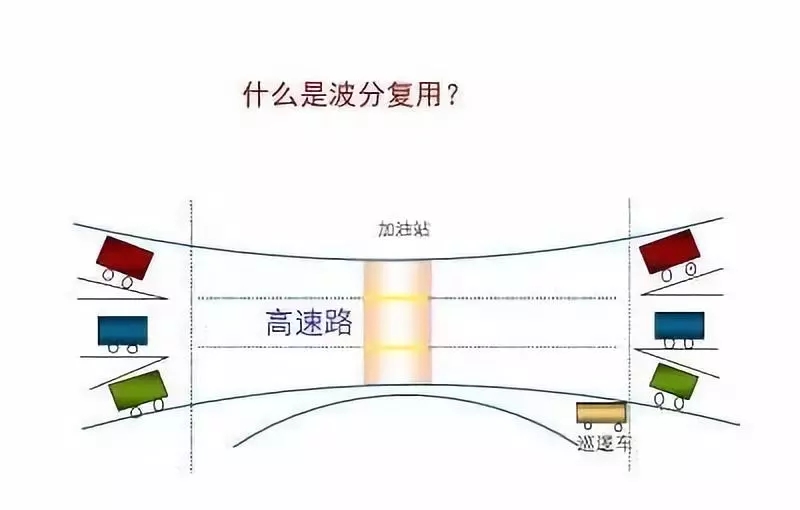
Wavelength division multiplexing
It uses multiple lasers to send multiple lasers of different wavelengths on a single fiber at the same time. After data (text, voice, video, etc.) modulation, each signal is transmitted in its unique color band. WDM can greatly increase the capacity of existing optical fiber infrastructure of telephone companies and other operators. Manufacturers have introduced WDM systems, also known as DWDM (dense wavelength division multiplexing) systems.
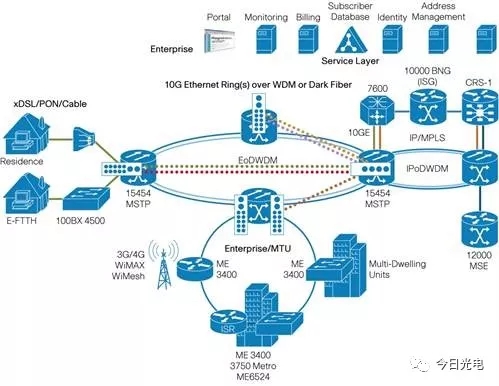
DWDM can support more than 150 light waves of different wavelengths to transmit at the same time, and the data transmission rate of each light wave is up to 10Gb / s. This system can provide more than 1TB / s data transmission rate on a cable thinner than the hair.
Optical communication is a way of transmitting signals by light. In the field of optical communication, people are used to naming by wavelength rather than by frequency. Therefore, the so-called WDM (wavelength division multiplexing) is essentially frequency division multiplexing. WDM carries multiple wavelength (channel) systems on one fiber, and converts one fiber into multiple "virtual" fibers. Of course, each virtual fiber works on different wavelengths independently, which greatly improves the transmission capacity of the fiber.
Because of the economy and effectiveness of WDM system technology, it has become the main means to expand the capacity of optical fiber communication network. As a system concept, wavelength division multiplexing (WDM) technology usually has three multiplexing modes, i.e. 1310 nm and 1550 nm wavelength WDM, sparse wavelength division multiplexing (CWDM) and dense wavelength division multiplexing (DWDM).
In the early 1970s, this multiplexing technology used only two wavelengths: one wavelength for 1310 nm window and one wavelength for 1550 nm window. WDM technology was used to realize single fiber dual window transmission, which was the initial use of WDM.
Coarse wavelength division multiplexing
After the application in backbone network and long-distance network, WDM technology has also been used in man, mainly referring to the coarse WDM technology. CWDM uses a wide window of 1200-1700 nm, and its main application wavelength is 1550 nm. Of course, the wavelength division multiplexer of 1310 nm is also under development.
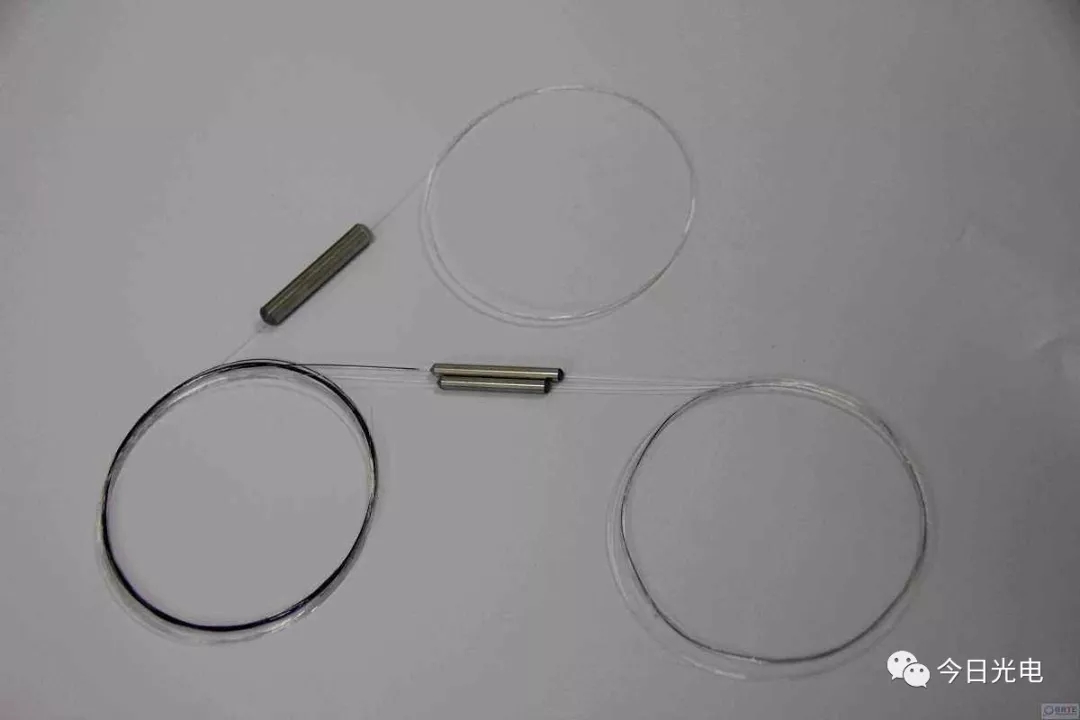
The distance between adjacent channels of the coarse wavelength division multiplexer is generally ≥ 20 nm, and the number of its wavelengths is generally 4 or 8, with a maximum of 16. When the number of multiplexing channels is 16 or less, because the DFB laser used in CWDM system does not need cooling, CWDM system has more advantages than DWDM System in cost, power consumption requirements and equipment size, and CWDM is more and more widely accepted by the industry. CWDM does not need to choose expensive DWDM and EDFA, but only uses cheap multi-channel laser transceiver as relay, so the cost is greatly reduced. Nowadays, many manufacturers have been able to provide commercial CWDM systems with 2-8 wavelengths, which are suitable for use in cities where the geographical scope is not particularly large and the data business development is not very fast.
Dense wavelength division multiplexing
DWDM can carry 8-160 wavelengths. With the continuous development of DWDM, the upper limit of DWDM is still growing, and the interval is generally ≤ 1.6nm, which is mainly used in long-distance transmission system. In all DWDM systems, dispersion compensation technology is needed (to overcome the nonlinear distortion in multi wavelength systems - four wave mixing).
In 16 wave DWDM system, conventional dispersion compensation fiber is usually used for compensation, while in 40 wave DWDM system, dispersion slope compensation fiber must be used for compensation. DWDM can combine and transmit different wavelengths in the same fiber at the same time. In order to ensure effective transmission, one fiber is converted into multiple virtual fibers. With DWDM technology, the data flow of a single optical fiber can be as high as 400 Gbit / s. with manufacturers adding more channels to each optical fiber, the transmission speed of terabits per second is just around the corner.
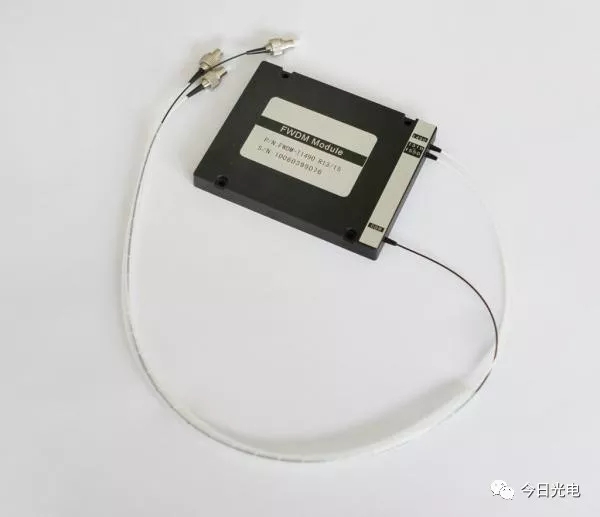
Purpose
DWDM can combine and transmit different wavelengths in the same fiber at the same time. To ensure effectiveness, one fiber is converted into multiple virtual fibers. Therefore, if you plan to multiplex eight optical fiber carriers (OC), that is, to transmit eight signals in one optical fiber, the transmission capacity will be increased from 2.5 GB / s to 20 GB / s. Due to the DWDM technology, a single fiber can transmit up to 40 Gb / s data flow. With manufacturers adding more channels to each fiber, the transmission speed of megabits per second is just around the corner.
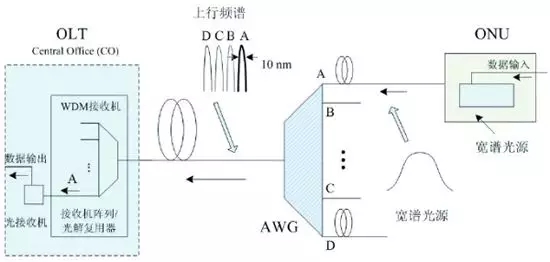
Technology
Wavelength division multiplexing (WDM) is a technology that combines two or more different wavelengths of optical carrier signals (carrying various kinds of information) at the sending end and transmits them in the same optical fiber coupled to the optical line by multiplexer (also called multiplexer); at the receiving end, the optical carriers of various wavelengths are separated by demultiplexer (also called demultiplexer or demultiplexer) After that, the optical receiver performs further processing to recover the original signal. This technology of transmitting two or more optical signals of different wavelengths in the same optical fiber is called wavelength division multiplexing.
WDM is essentially FDM technology in optical domain
Each wavelength path is realized by frequency domain segmentation, and each wavelength path occupies a section of fiber bandwidth. WDM system adopts different wavelengths, i.e. specific standard wavelengths. In order to be different from the ordinary wavelengths of SDH system, it is sometimes called color optical interface, and the optical interface of ordinary optical system is called "white optical interface" or "white optical interface".

The design of communication system is different, and the interval width between each wavelength is also different. According to the different channel spacing, WDM can be divided into CWDM (sparse wavelength division multiplexing) and DWDM (dense wavelength division multiplexing). The channel interval of CWDM is 20nm, while that of DWDM is from 0.2nm to 1.2nm, so compared with DWDM, CWDM is called sparse WDM.
Characteristic
(1)Llarge capacity transmission
Because the multiplexing optical path rate of WDM system can be 2.5gbit/s, 10Gbit / s, and the number of multiplexing optical paths can be 4, 8, 16, 32, or even more, the transmission capacity of the system can reach 300-400gbit / s, or even more.
(2) Saving optical fiber resources
For a single wavelength system, a SDH system needs a pair of optical fibers; for a WDM system, no matter how many SDH subsystems there are, the whole multiplexing system only needs a pair of optical fibers. For example, for 16 2.5gbit/s systems, a single wavelength system needs 32 fibers, while a WDM system only needs two fibers.
(3) Transparent transmission of each channel, smooth upgrade and expansion
As long as the number of multiplexing channels and equipment are increased, the transmission capacity of the system can be increased to achieve capacity expansion. Each multiplexing channel of WDM system is independent of each other, so each channel can transparently transmit different traffic signals, such as voice, data and image, without interference with each other, which brings great convenience to users.

(4) Using EDFA to realize ultra long distance transmission
EDFA has the advantages of high gain, wide bandwidth and low noise, and its optical amplification range is 1530 (1565nm), but the flat part of its gain curve is 154 (1560nm). It can almost cover the operating wavelength range of 1550nm of WDM system. Therefore, a wide bandwidth EDFA can amplify the multiplexing optical path signals of WDM system at the same time, so as to realize the ultra long distance transmission of the system, and avoid the situation that each optical transmission system needs an optical amplifier. The ultra long transmission distance of WDM system can reach hundreds of kilometers and save a lot of relay equipment and cost.
(5) Improve the reliability of the system
Because most WDM systems are photoelectric devices, and the reliability of photoelectric devices is very high, so the reliability of the system can also be guaranteed.
(6) It can form all-optical network
All optical network is the future development direction of optical fiber transmission network. In all-optical network, the up-down and cross connection of various services are realized by scheduling optical signals on the optical path, thus eliminating the bottleneck of electronic devices in E / O conversion. WDM system can be mixed with OADM and OXC to form an all-optical network with high flexibility, high reliability and high survivability to meet the development needs of bandwidth transmission network.
